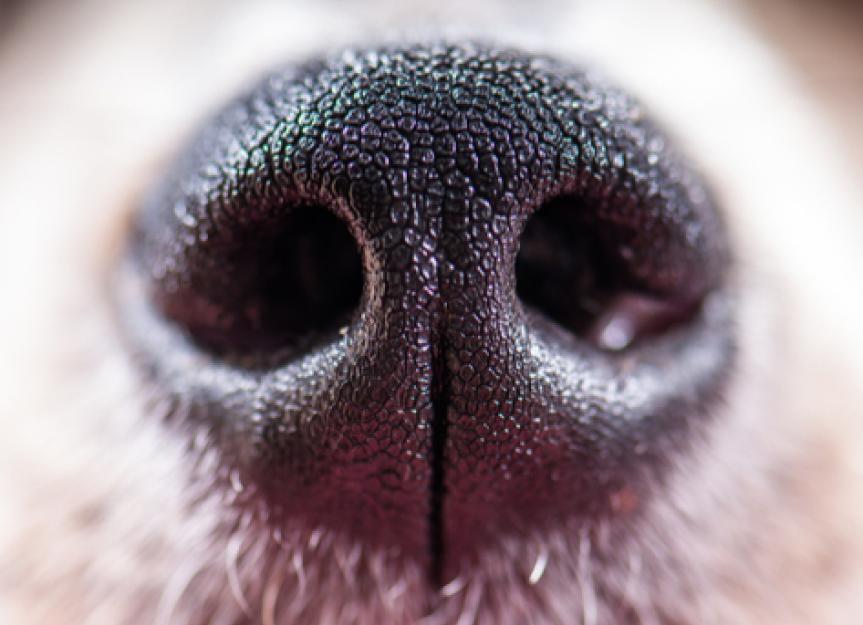
It’s unrealistic to expect our pets to disregard the incredible gift that nature bestowed upon them—their remarkable sense of smell. Just as we would never ask someone to cease their ability to see, we can’t anticipate dogs to relinquish their innate desire to sniff. However, what we can strive to do is satisfy their daily olfactory needs while simultaneously providing some tranquility for the people sharing their lives.
Understanding the importance of sniffing for dogs is key to finding a balance that meets both their needs and our desire for peace. Sniffing is an essential part of a dog’s world; it allows them to gather information, explore their environment, and interpret the rich tapestry of scents that surrounds them. It provides mental stimulation and satisfies their natural instincts.
To accommodate their sniffing instincts in a way that harmonizes with our daily lives, we can incorporate activities that fulfill their olfactory needs. Engaging in scent-based games, such as hiding treats around the house or utilizing puzzle toys that require scent detection, can provide dogs with an outlet for their natural sniffing behaviors. This not only stimulates their minds but also allows them to indulge in their innate abilities in a controlled and enjoyable manner.
In addition, incorporating regular walks and outings where dogs can freely explore their surroundings and follow scent trails can be highly beneficial. These outings serve as an opportunity for dogs to exercise their sense of smell while providing mental enrichment and physical exercise. By dedicating specific times for these sniffing adventures, we can help strike a balance between their natural instincts and our need for a peaceful living environment.
Creating designated sniffing areas within our homes or outdoor spaces can also be a constructive approach. These areas can be filled with safe and intriguing scents that dogs are encouraged to explore, redirecting their sniffing behavior to a designated space rather than having it intrude on other areas where it may cause disruption or inconvenience.
Ultimately, finding ways to accommodate our pets’ inherent need to sniff allows them to lead fulfilling lives while promoting a sense of harmony within our households. Embracing and understanding their natural behaviors, including their olfactory prowess, helps create a mutually beneficial relationship that respects their instincts while maintaining a peaceful environment for all.
Set aside sniff time. Dogs who have been cooped up all day are going to be eager to fill their noses with exciting smells when you take them out. Your walks will go much more smoothly if you let them run around in the yard for a few minutes before you take to the streets. Let your dog have a little free time. Give her a chance to sniff and explore. This will take the edge off her excitement. Once she has filled her nose with scents, she’ll be less frantic when she’s on the leash.
Feed the other senses. Dogs who are determined to sniff are all but oblivious to the person at the other end of the leash. The only way you’re going to make any progress on walks is to keep your dog’s attention focused on you. This means that you have to make yourself more interesting than all those scents that are clamoring for her attention. Try putting a few dog snacks in your pocket before you set out. When her nose starts to drift, twitch her collar with the leash and say, “Watch me!” When she looks at you, give her one of the treats. The smell of food in your pockets will become much more intriguing than the miscellaneous smells on the ground, and she’ll be strongly motivated to keep up with you.
Protect your privates. Dogs should never be allowed to bury their noses in people’s crotches. This type of greeting may be acceptable among dogs, but it’s not among people. Try raising a knee every time your dog goes in for a sniff. You don’t want to bash her, but you do want to block the sniff before it gets under way. This sends an unmistakable message that attention and head rubbing aren’t going to be forthcoming. Most dogs will then start looking for other ways to get attention.
Don’t capitulate. It’s almost an instinct to reach down and pet dogs who are persistently nosing for attention. That physical contact is what keeps them coming back. Petting encourages them and guarantees that they’ll chase crotches forever.
Reduce their reach. Since dogs do most of their crotch sniffing when they’re meeting someone new, try teaching them a new style of greeting. When people come over to your house, or when your dog is meeting people in public, have her sit right away. Your dog is still going to angle her nose forward, but she won’t have the mobility to actually put it where she shouldn’t. If you do this every time your dog meets someone, she’ll realize that she only gets attention when she’s sitting and people come to her.
